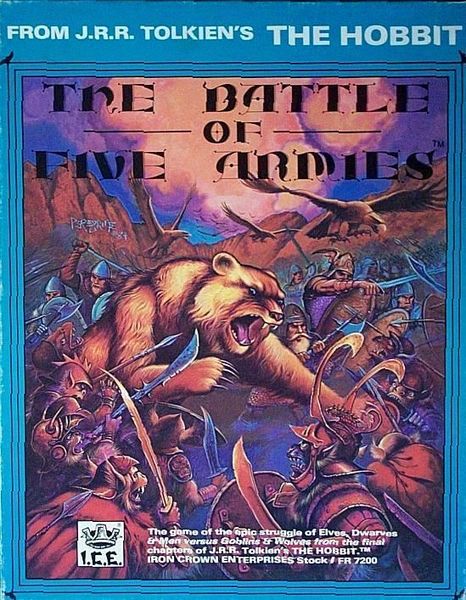The Battle of Five Armies (1984) Board Game
The Battle of Five Armies is a board game based on J.R.R. Tolkien’s classic fantasy novel, The Hobbit. It was first released in 1984 by Iron Crown Enterprises and designed by Stephan Peregrine. The game allows players to recreate the epic battle depicted in the book, where five armies clash in the aftermath of Smaug’s defeat.
Game Components of The Battle of Five Armies
How To Setup The Battle of Five Armies
To set up the game, each player chooses a side: the Shadow player commands the armies of Bolg, while the Free Peoples player controls Men, Dwarves, and Elves led by Gandalf. The board is laid out with the respective starting positions for each army. The Shadow player’s reinforcements are placed according to the game rules, and each player receives their action dice and event cards. The Fate Track is set up to handle the arrival of allies and special events.
Gameplay Mechanics and Game Objective
Player Experience
The game offers a strategic experience with each side having unique challenges. However, some players find the gameplay repetitive, particularly for the Shadow player. The Shadow player’s strategy often revolves around holding specific areas to gain additional dice, which can lead to a predictable game flow. The game’s design means that the Shadow player’s forces weaken over time, reducing the number of actions they can take, which can result in a less engaging endgame.
Pros
Cons
Personal Thoughts on The Battle of Five Armies
This game is best suited for fans of _The Hobbit_ and Tolkien enthusiasts who enjoy strategic board games. However, due to its repetitive nature and the diminishing engagement for the Shadow player, it may not be the best choice for those seeking a highly dynamic and varied gameplay experience. If you’re looking for a more complex and engaging game within the same theme, _War of the Ring_ is often recommended.
We are supported by our audience. When you purchase through links on our site, we may earn an affiliate commission, at no extra cost for you. Learn more.

